A temporary home for a contemporary gallery
Gertrude Glasshouse Gallery
Overview
With the property boom transforming Melbourne’s inner-city neighbourhoods of Fitzroy and Collingwood, space is at a premium – especially for artists. Private donors looked to looked to continue championing contemporary Australian art by converting part of a former glass works factory into a multi-purpose exhibition space for not-for-profit gallery Gertrude Contemporary.
Since its inception Gertrude Contemporary has become an international institution – every artist who has represented Australia at the Venice Biennial since 1999 has either held a studio or participated in an exhibition at Gertrude Contemporary. The original Gallery actively engaged with the street, with a large glass window facing onto Gertrude St, and a dedicated project space that could be viewed from the street by passers-by. As an institution in the neighbourhood, openings would see people pouring out on to the street, blurring the boundaries between the interior and exterior. This engagement with the street was the starting point for the design of Gertrude Glasshouse.
An amplified threshold between the street and the gallery interior creates a portal into the art world via the display of work through an overblown reflective grid. Stepping into this highly illuminated alcove, the mirror-clad surrounds imbues an infinite spectacle where gallery visitors become their own show. This area acts as an antidote to the adjacent white cube, here people become the spectacle, conversation and engagement is amplified and this becomes the mediator between the street and the gallery space. The large operable moving wall further blurs the division between public and private space and gives the opportunity for the gallery to bleed out onto the street. Once the doors are fully open there is no divide at all and the street and internal space can act as one.
The exterior grid continues inside along the concrete-coffered ceiling. Below, the space is left neutral for artists to inhabit.When the lights are turned off and the art crowd head off into the twilight, the roller door comes down to signal the close of the day. An art light-box switches on to illuminate the street – ensuring art radiates twenty-four-seven.
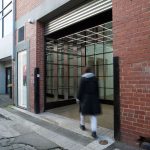
Openings would see people pouring out on to the street, blurring the boundaries between the interior and exterior. This engagement with the street was the starting point for the design of Gertrude Glasshouse.
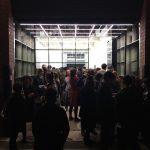
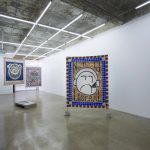
An amplified threshold between the street and the gallery interior creates a portal into the art world via the display of work through an overblown reflective grid.
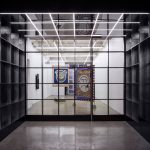
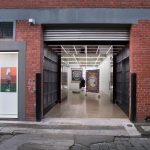

Openings would see people pouring out on to the street, blurring the boundaries between the interior and exterior. This engagement with the street was the starting point for the design of Gertrude Glasshouse.


An amplified threshold between the street and the gallery interior creates a portal into the art world via the display of work through an overblown reflective grid.





